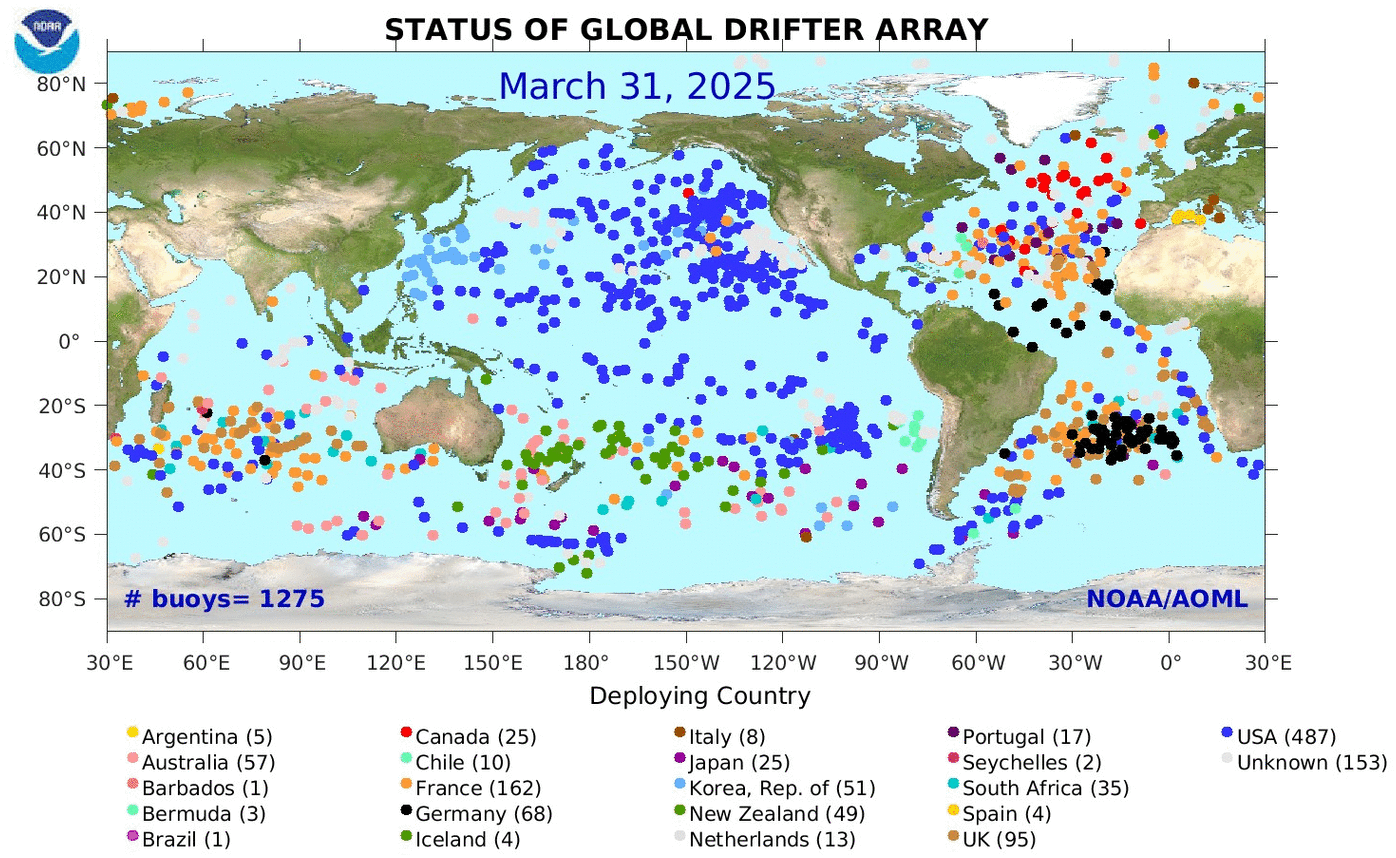
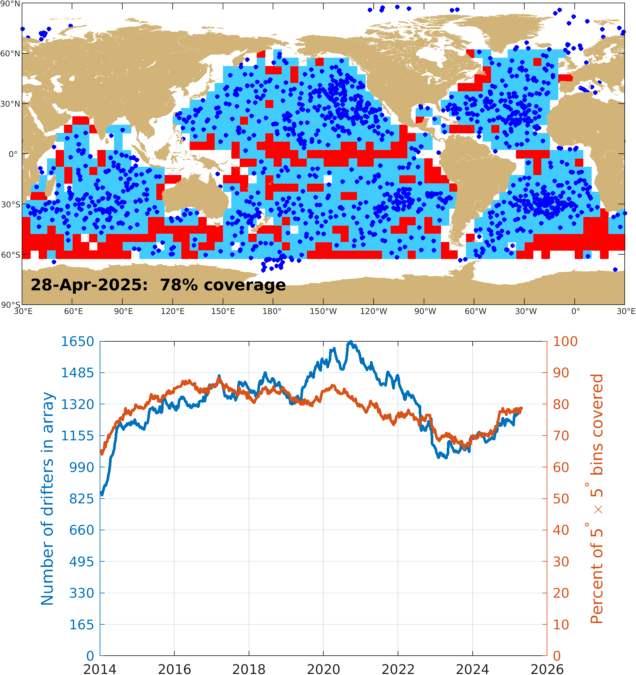
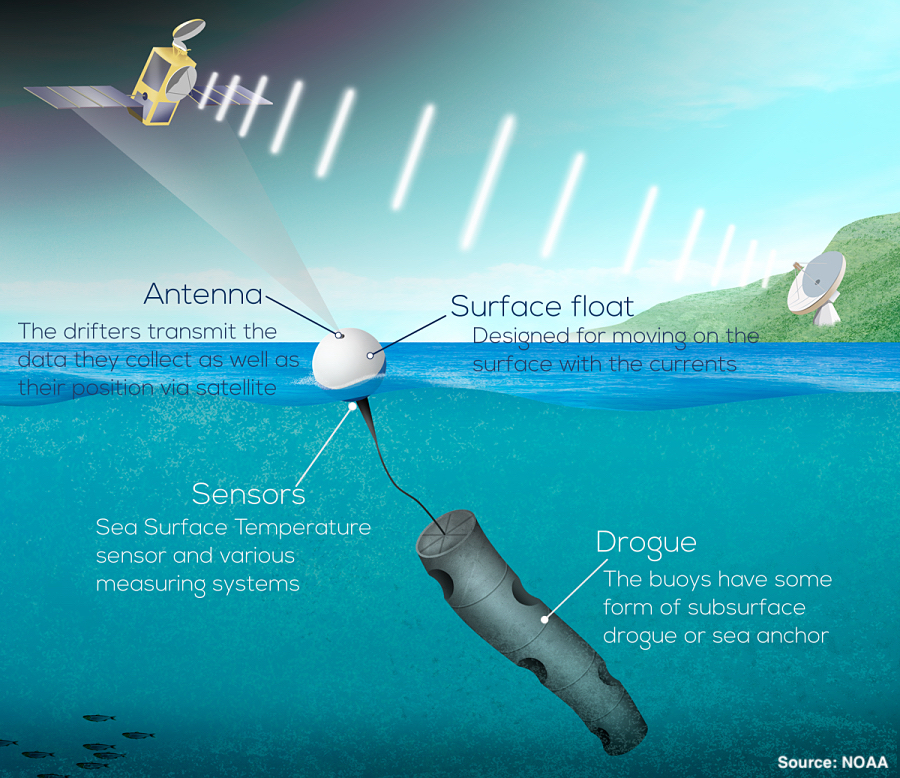
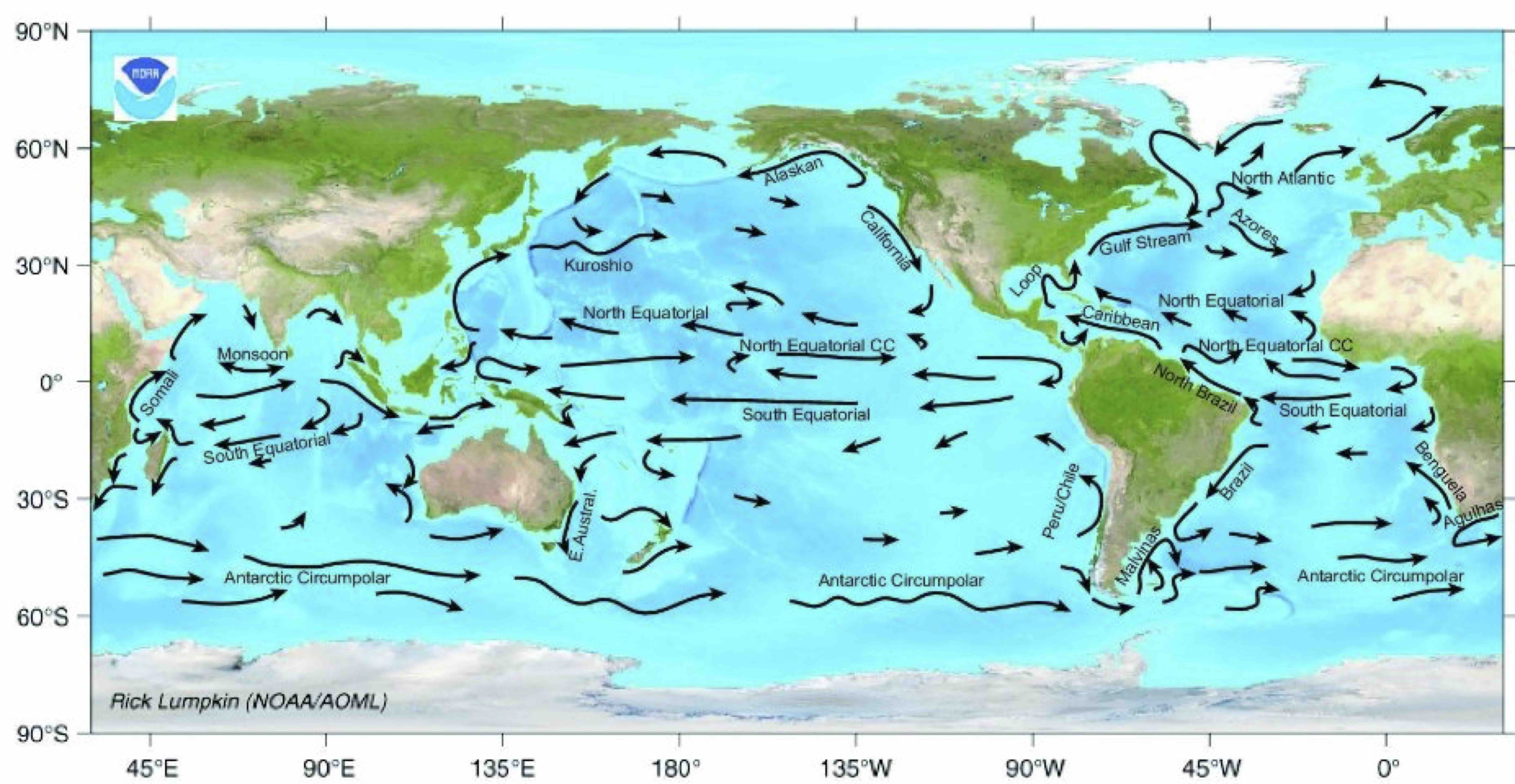
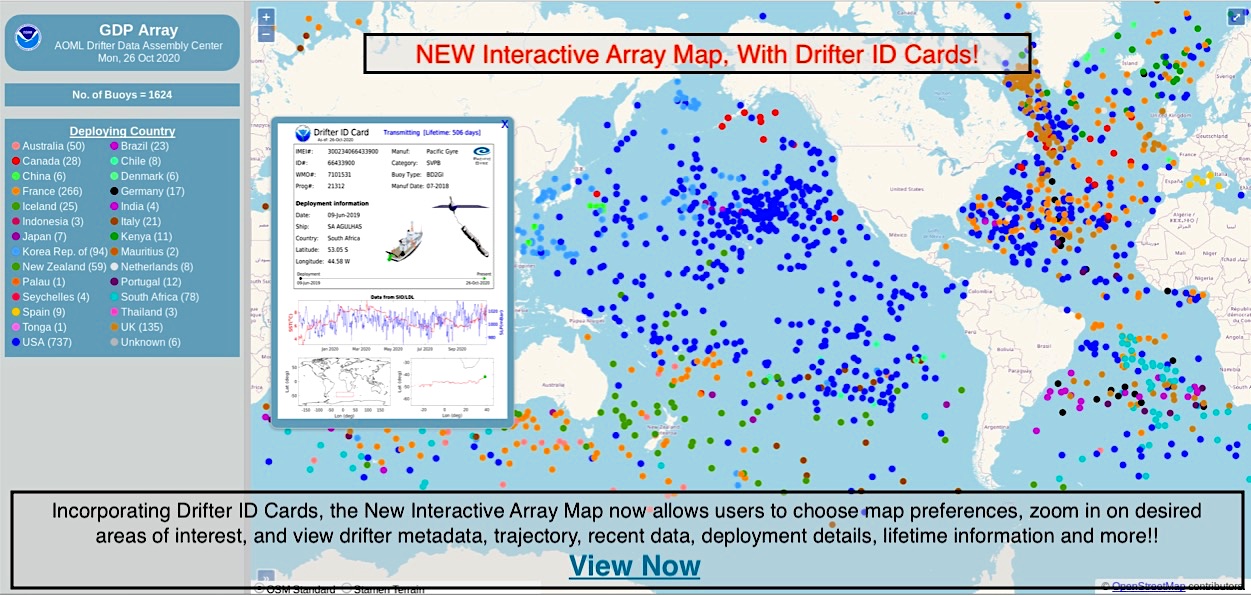

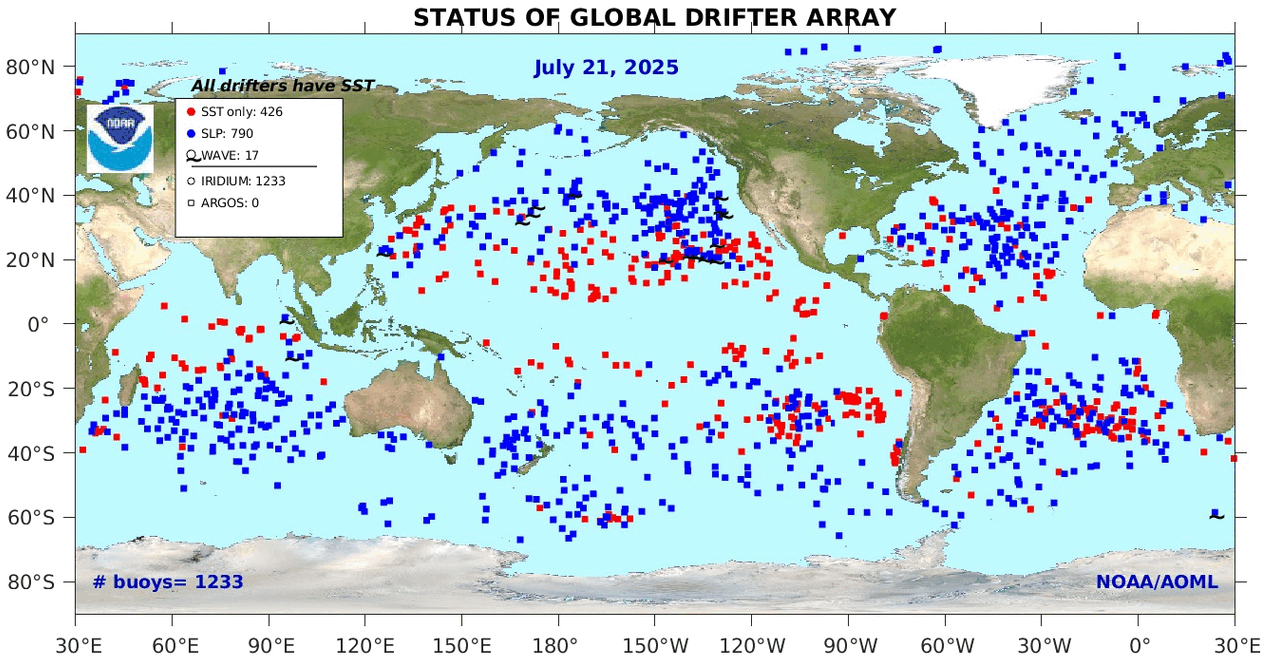
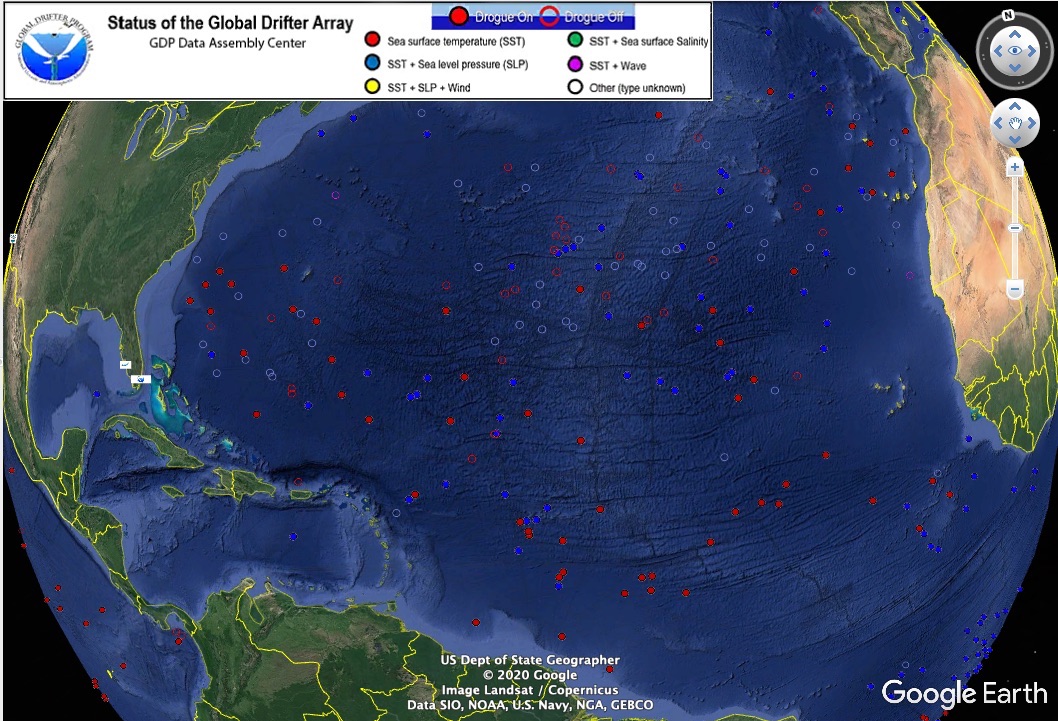

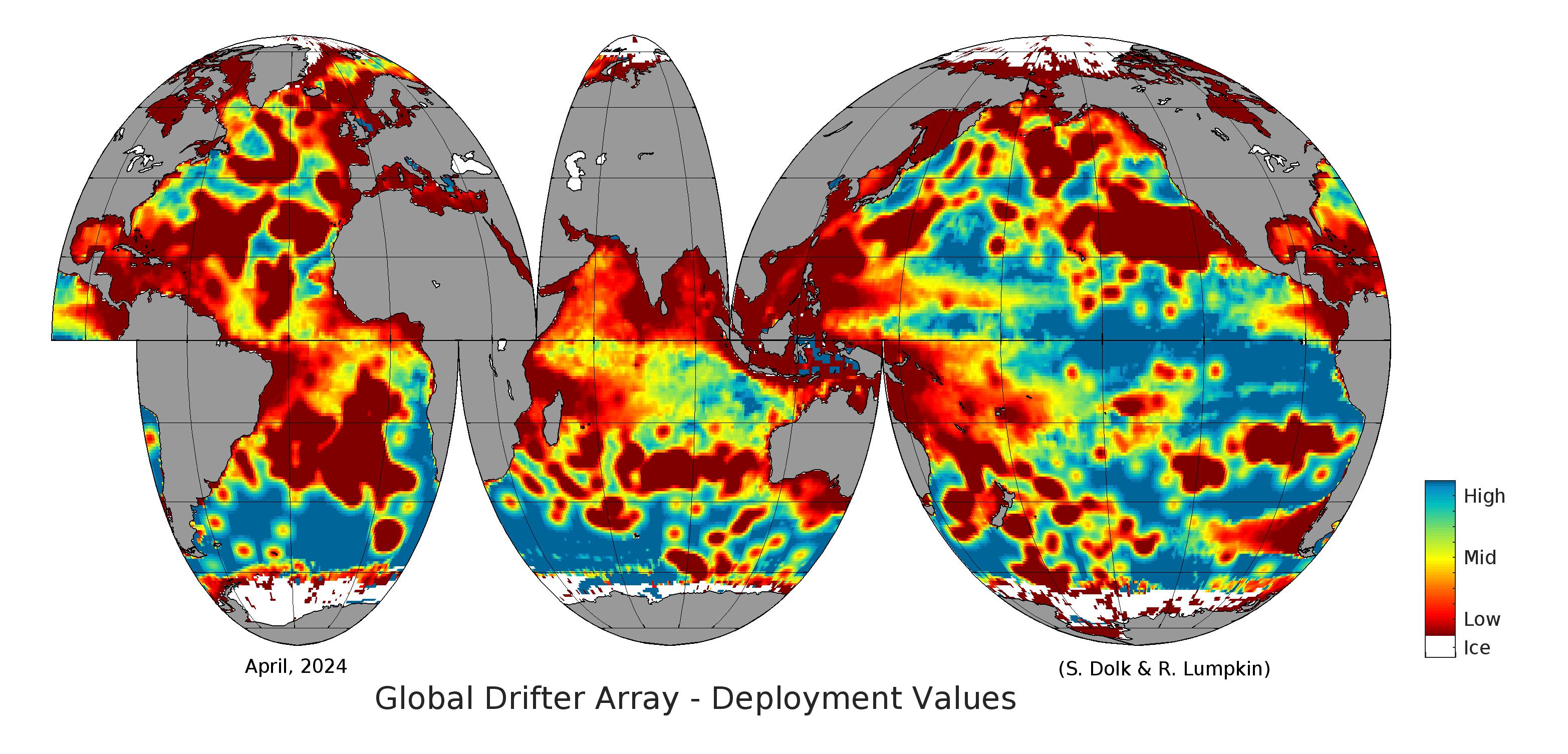
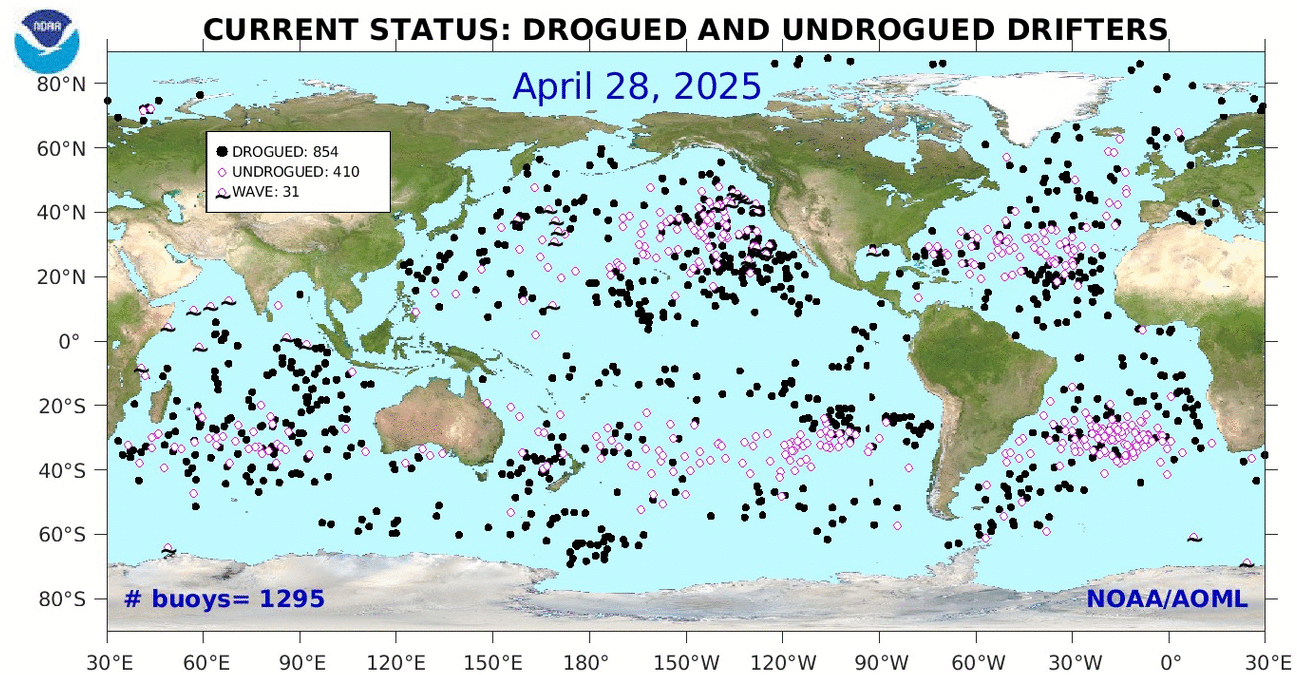
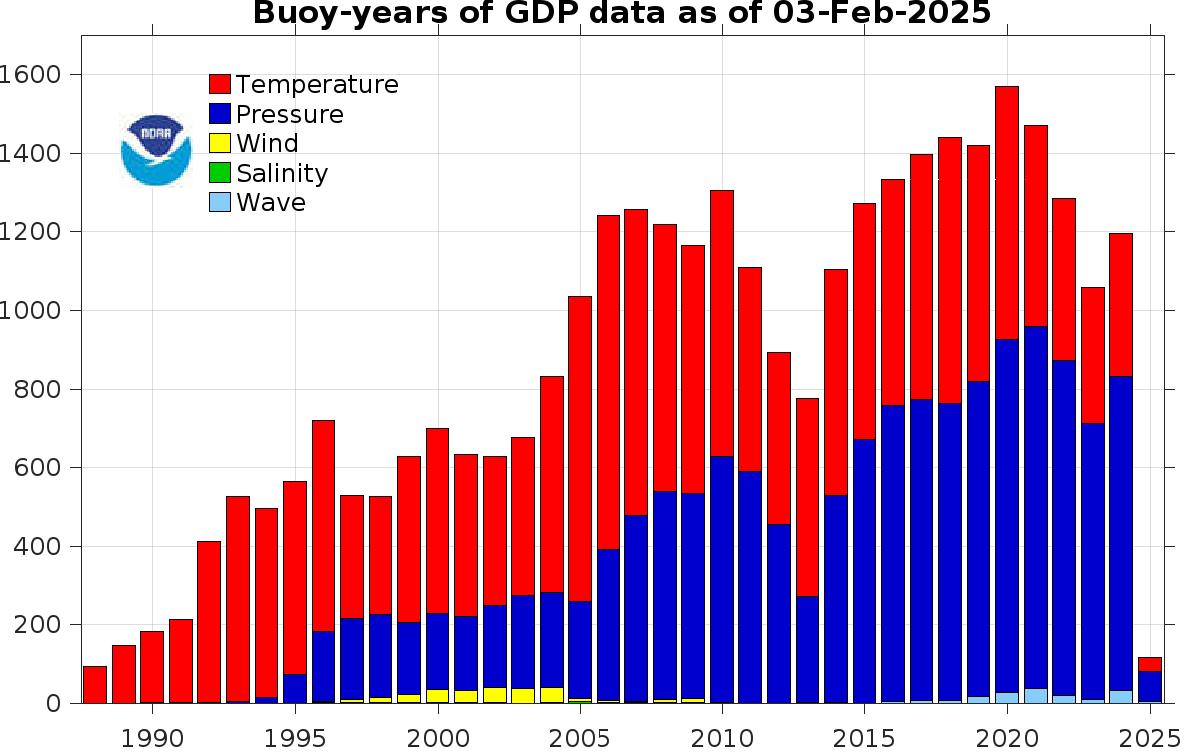
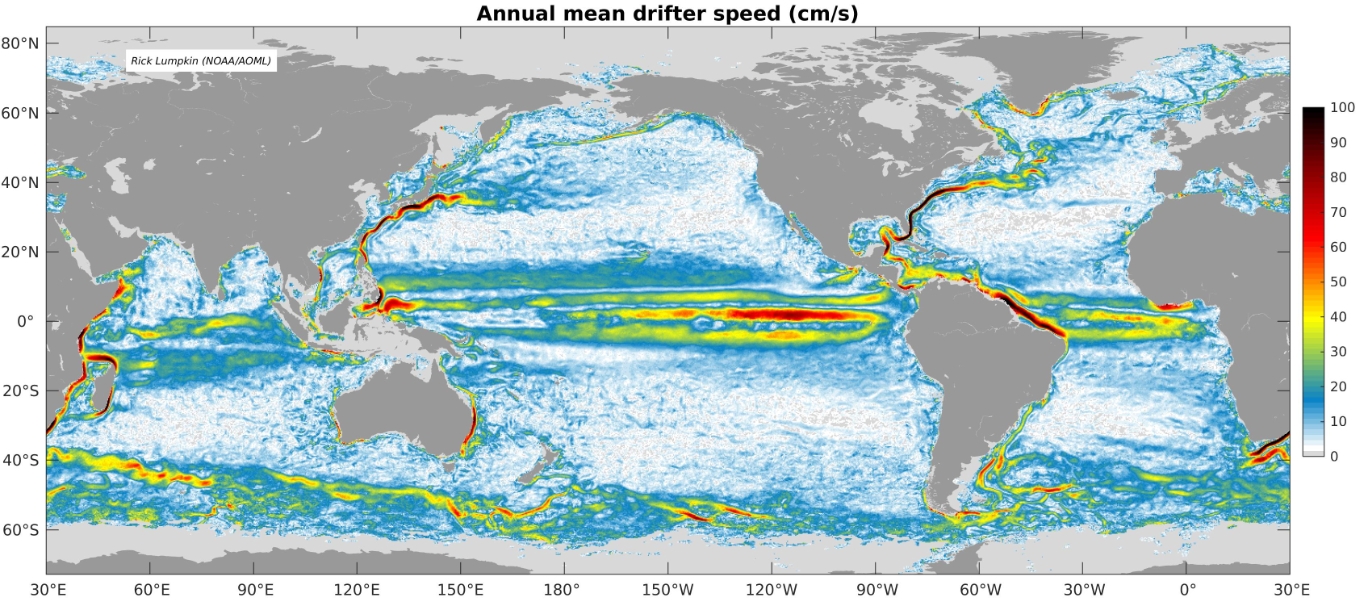


Ocean Odyssey: Tracking Marine Debris - Web Game
NOAA’s Adopt a Drifter Program’s first summer intern designed and developed
Ocean Odyssey: Tracking Marine Debris,
a NOAA SciJinks web game suitable for K-12 audiences.
The NOAA Global Ocean Monitoring and Observing program web story can be found here.
Related stories shared on social media can be found atp>
30,000th Drifter Deployment!
NOAA's Global Drifter Program (GDP) reached a significant milestone: the 30,000th drifter deployment since the start of the program in 1979!
The drifter was one of ten deployed during the recent RAMA Tropical Moored Buoy cruise in the Indian Ocean along 67°E. The RAMA cruise was conducted aboard the R/V Isabu, in close collaboration between the Korean Institute of Ocean Science & Technology (KIOST) and NOAA. This partnership between the Global Drifter Center at NOAA’s AOML, the Global Tropical Moored Buoy Array at NOAA’s Pacific Marine and Environmental Laboratory, and KIOST is an example of how the GDP collaborates with numerous national and international partners to achieve its mission of maintaining a global 5º x 5º array.
RAMA moorings staged on the aft deck of the R/V ISABU in preparation for deployment. Photo Credit: Tara Clemente (UW CICOES/NOAA PMEL)
With the growing importance for strong data management principles, Samantha Ouertani's 'An Overview of the Global Drifter Program's ERDDAP Server: From Set-up to Metrics' seminar detailing the benefits of the Global Drifter Program's ERDDAP server is available on Youtube. For those interested in establishing an ERDDAP server, reference the presentation for great insight, links, and additional resources!
ERDDAP YouTube Tutorial is now available.
For more information about the impacts of the
AOML GDP ERDDAP and how the AOML GDP ERDDAP increases access to drifting buoy data, click here.
Related stories shared on social media can be found on:
AOML GDP ERDDAP is now live!
6-hour quality-controlled data and hourly quality controlled data are now available at the AOML GDP ERDDAP server. For instructions how to download QC drifter data, refernce the links below and query by desired parameter(s).
A new dataset of hourly drifter temperatures, locations, and velocities has been released and is available at https://www.aoml.noaa.gov/phod/gdp/hourly_data.php. The methodology to derive these data is described in “A dataset of hourly sea surface temperature from drifting buoys” by S. Elipot, A. Sykulski, R. Lumpkin, L. Centurioni, and M. Pazos (Scientific Data, https://arxiv.org/abs/2201.08289). In this hourly dataset, total, diurnal, and nondiurnal SST components and their formal error bars have now been included.
Version 1.04c of the hourly drifter data is now available (using a secure FTP client, such as FileZilla).
Hurricane Epsilon Drifter Deployments
On the afternoon of Thursday, Oct. 22, a C-130J of the Air Force 53rd squadron “Hurricane Hunters” deployed 12 drifters ahead of Hurricane Epsilon northeast of Bermuda. This deployment was coordinated by Rick Lumpkin (NOAA/AOML), in partnership with Luca Centurioni (SIO/LDL), CARCAH (NWS/NHC), and colleagues in HRD, EMC, and elsewhere. The drifters, designed and built at the Lagrangian Drifter Laboratory at SIO, are measuring directional wave spectra, wind speed and direction, barometric pressure, sea temperatures from the surface to 150m depth, and near-surface ocean currents. All 12 drifters are now transmitting data being placed on the GTS. The data will be analyzed as a case study of a hurricane transitioning to extratropical status, with an unusually large gale-force wind field.
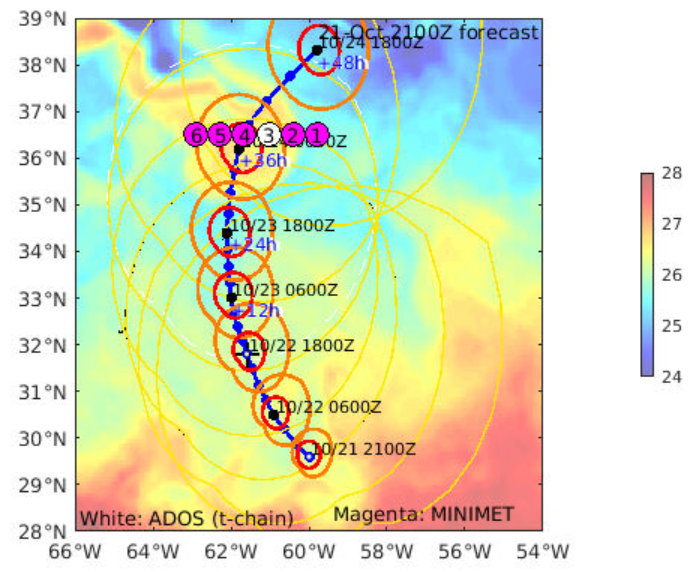
Location of 6 pairs of drifters deployed ahead of Hurricane Epsilon, superimposed on Sea Surface Temperature (colors). Each pair had a wave drifter and either a Minimet (a standard GDP barometer drifter with wind speed and direction added) or ADOS drifter (replacing the 15m drogue with a thermistor chain to 150m depth).
Hurricane Teddy Drifter Deployments
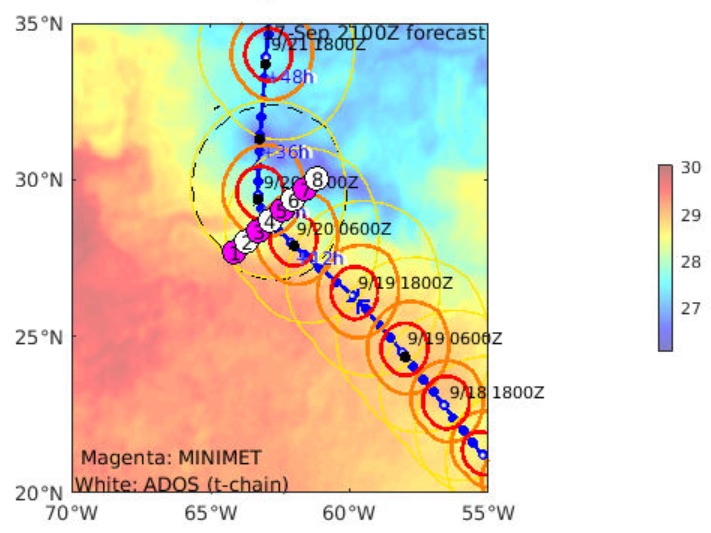
Location of 8 pairs of drifters deployed ahead of Hurricane Teddy, superimposed on Sea Surface Temperature (colors). Each pair had a wave drifter and either a Minimet (a standard GDP barometer drifter with wind speed and direction added) or ADOS drifter (replacing the 15m drogue with a thermistor chain to 150m depth).
On Saturday, September 19, 16 drifters were air-deployed from an Air Force C-130J of the 53rd Reconnaissance Squadron ahead of major hurricane Teddy southeast of Bermuda. The deployment was coordinated by Rick Lumpkin (NOAA/AOML) in collaboration with Luca Centurioni (SIO/LDL), CARCAH (NWS/NHC), and colleagues in EMC, HRD, and elsewhere. The drifters, designed and built at the Lagrangian Drifter Laboratory at SIO, are measuring directional wave spectra, wind speed and direction, barometric pressure, sea temperatures from the surface to 150m depth, and near-surface ocean currents. The drifters were packaged two per box; the parachute on one box failed, but all other drifters reported good data as the storm approached and passed, including measurements within the cold wake of Hurricane Paulette that had passed over the region the week before.